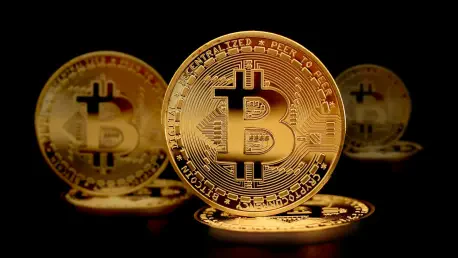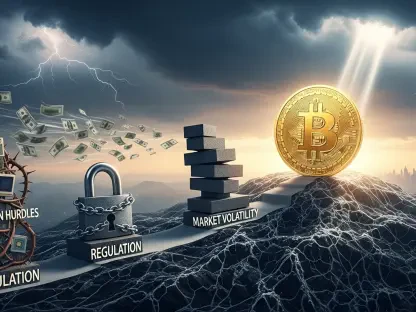Imagine a financial world where anyone, regardless of their economic background, can invest in high-value assets like real estate or major stock indices with just a few dollars, turning a once-distant dream into reality through tokenization. This groundbreaking process converts real-world assets into digital tokens on a blockchain, transforming not only how investments are accessed but also reshaping the landscape of cryptocurrency payments. By enabling fractional ownership and enhancing liquidity, tokenization is breaking down long-standing barriers in traditional finance. Major players like S&P Dow Jones Indices are at the forefront, integrating blockchain to bring trusted benchmarks to a wider audience. Beyond accessibility, the transparency and efficiency of blockchain technology promise to streamline transactions and redefine asset management. As this innovation gains momentum, it raises critical questions about regulation, security, and the future of global finance, setting the stage for a deeper exploration of its impact.
Breaking Barriers in Asset Accessibility
Tokenization is fundamentally changing the investment landscape by democratizing access to asset classes that were previously out of reach for many. Through the process of digitizing assets on a blockchain, individuals can now own fractions of high-value investments such as private equity or real estate. This fractional ownership model means that retail investors, as well as those in emerging markets, are no longer excluded by the high capital requirements of traditional markets. Major financial indices, like those managed by S&P Dow Jones Indices, are being tokenized to allow broader participation. The implications are profound, as this shift not only levels the playing field but also boosts market liquidity by enabling more participants to trade smaller portions of assets. Blockchain’s inherent transparency further ensures that these transactions are verifiable, fostering trust among a diverse pool of investors who can now engage with opportunities once reserved for the elite.
Beyond just accessibility, tokenization introduces unprecedented flexibility in how investments are managed and traded. The use of blockchain technology enables 24/7 trading capabilities, a significant departure from the rigid schedules of traditional financial markets. Automated portfolio management, powered by smart contracts, allows for real-time adjustments without the delays often associated with conventional systems. This efficiency is particularly beneficial for investors seeking to respond quickly to market changes. Additionally, the reduced need for intermediaries cuts down on transaction costs, making investing more affordable for the average person. As tokenization bridges the gap between traditional finance and digital innovation, it creates a more inclusive ecosystem where financial opportunities are not dictated by wealth or geographic location. This transformation signals a potential shift in how global investment strategies are crafted, emphasizing accessibility and responsiveness as core principles of modern asset management.
Enhancing Crypto Payments with Stablecoins
In parallel with its impact on investments, tokenization is revolutionizing cryptocurrency payments by integrating stablecoins into the financial ecosystem. Stablecoins, digital currencies pegged to established fiat currencies, offer a reliable medium for transactions on blockchain platforms. This stability addresses the volatility often associated with cryptocurrencies, making them a practical tool for everyday payments and settlements in tokenized asset markets. As major investment managers adopt tokenized funds, stablecoins facilitate seamless transactions by enhancing liquidity and reducing friction. Their ability to maintain a consistent value ensures that investors and users can confidently engage in financial operations without the fear of sudden price swings. This development is paving the way for broader acceptance of digital currencies in mainstream finance, positioning stablecoins as a cornerstone of the evolving payment landscape.
Moreover, the integration of stablecoins with tokenized assets streamlines cross-border transactions, a notoriously slow and costly process in traditional systems. Blockchain technology, combined with stablecoins, enables near-instantaneous transfers at a fraction of the cost, benefiting both individual investors and institutions. This efficiency is particularly impactful for global markets, where currency conversion fees and banking delays often hinder financial operations. The transparency of blockchain further ensures that every transaction is traceable, reducing the risk of fraud and enhancing trust in digital payments. As tokenization continues to merge with cryptocurrency solutions, stablecoins are expected to play an increasingly vital role in supporting a fluid and accessible financial environment. This trend reflects a growing recognition of digital currencies as not just speculative assets but as functional tools that can transform how money moves across borders and markets.
Navigating Regulatory and Security Challenges
Despite its transformative potential, tokenization faces significant hurdles in the form of regulatory and security challenges that must be addressed to ensure sustainable growth. The decentralized nature of blockchain technology often conflicts with existing financial regulations, creating a complex environment for compliance. Governments and regulatory bodies worldwide are grappling with how to oversee tokenized assets without stifling innovation. Striking a balance between protecting investors and preserving the benefits of decentralization is a daunting task. Without clear guidelines, the adoption of tokenization risks being slowed by uncertainty, as financial institutions hesitate to fully embrace this technology. Collaborative efforts between industry stakeholders and policymakers are essential to develop frameworks that support growth while safeguarding the integrity of the financial system, ensuring that tokenization can thrive in a regulated yet dynamic landscape.
Equally pressing are the security concerns that accompany the rise of tokenized assets and blockchain-based payments. Vulnerabilities such as phishing attacks and the potential for 51% attacks on blockchain networks pose serious risks to investor data and funds. These threats can undermine confidence in digital assets if not adequately addressed. Ensuring robust security protocols is paramount to protect against breaches and maintain trust in this emerging field. Industry leaders must prioritize the development of advanced cybersecurity measures to safeguard transactions and tokenized portfolios. As the technology matures, ongoing vigilance and innovation in security practices will be critical to mitigating risks. Tackling these challenges head-on is necessary to sustain the momentum of tokenization, ensuring that the benefits of increased accessibility and efficiency are not overshadowed by preventable losses or breaches in trust within the financial ecosystem.
Paving the Way for a New Financial Era
Looking back, the journey of tokenization marked a pivotal shift in how financial systems operated, blending traditional asset management with cutting-edge blockchain technology. The efforts of key players like S&P Dow Jones Indices to tokenize major indices demonstrated a commitment to inclusivity, allowing diverse investors to participate in markets once deemed exclusive. Stablecoins emerged as vital tools, stabilizing crypto payments and enabling seamless global transactions. However, the path was not without obstacles, as regulatory ambiguities and security threats tested the resilience of this innovation. Reflecting on these developments, it became evident that the success of tokenization hinged on the industry’s ability to adapt and address these challenges with foresight and collaboration.
Moving forward, the focus must shift to actionable steps that build on past achievements. Establishing clear regulatory frameworks through dialogue between innovators and policymakers will be crucial to fostering trust and adoption. Simultaneously, investing in state-of-the-art security solutions can protect against evolving digital threats, ensuring investor confidence. Encouraging education around tokenized assets and blockchain technology will also empower more individuals to engage with this transformative space. As the financial landscape continues to evolve, tokenization stands poised to redefine global investments and payments, provided stakeholders commit to navigating complexities with strategic vision and a dedication to inclusivity.









